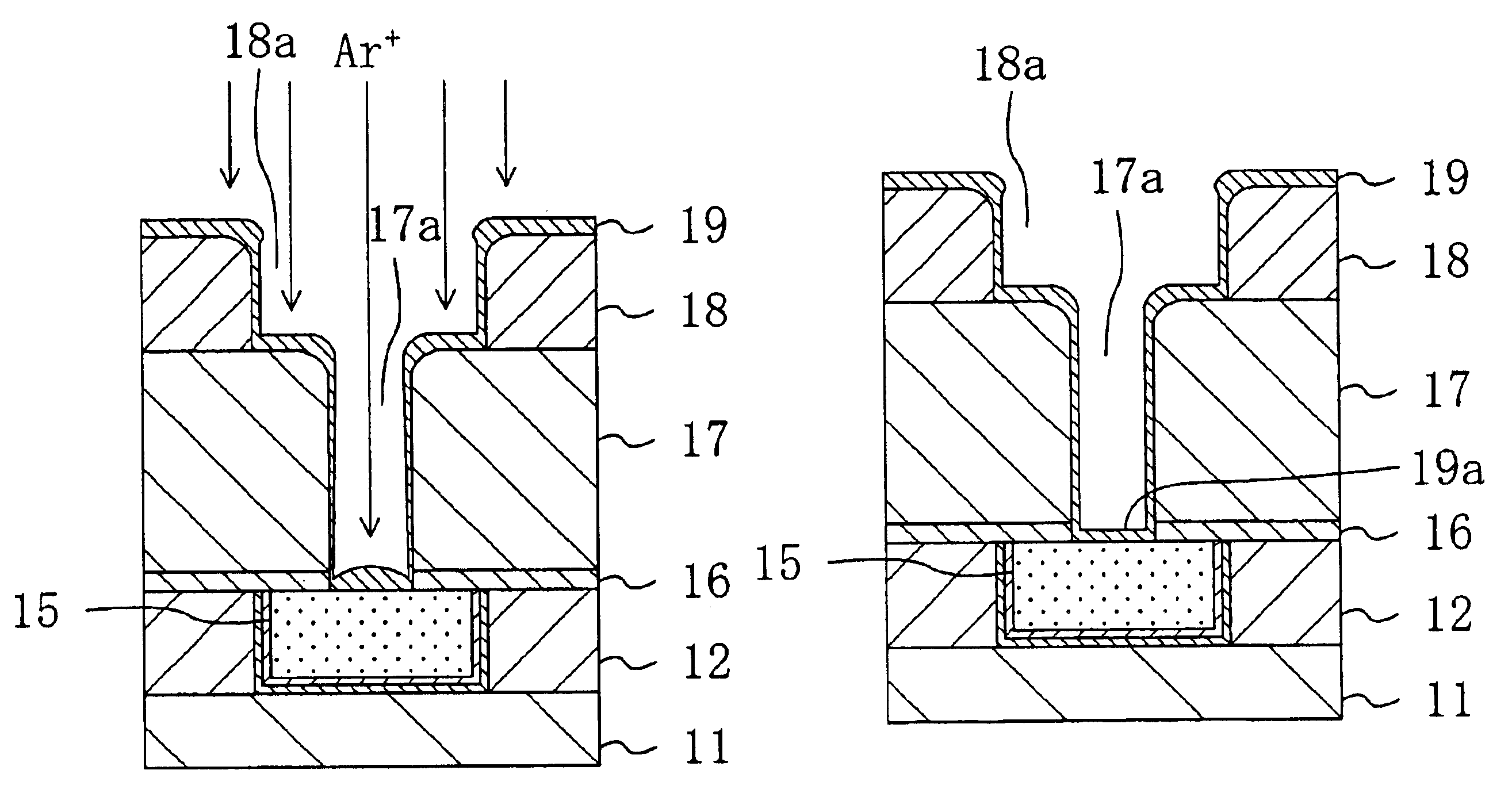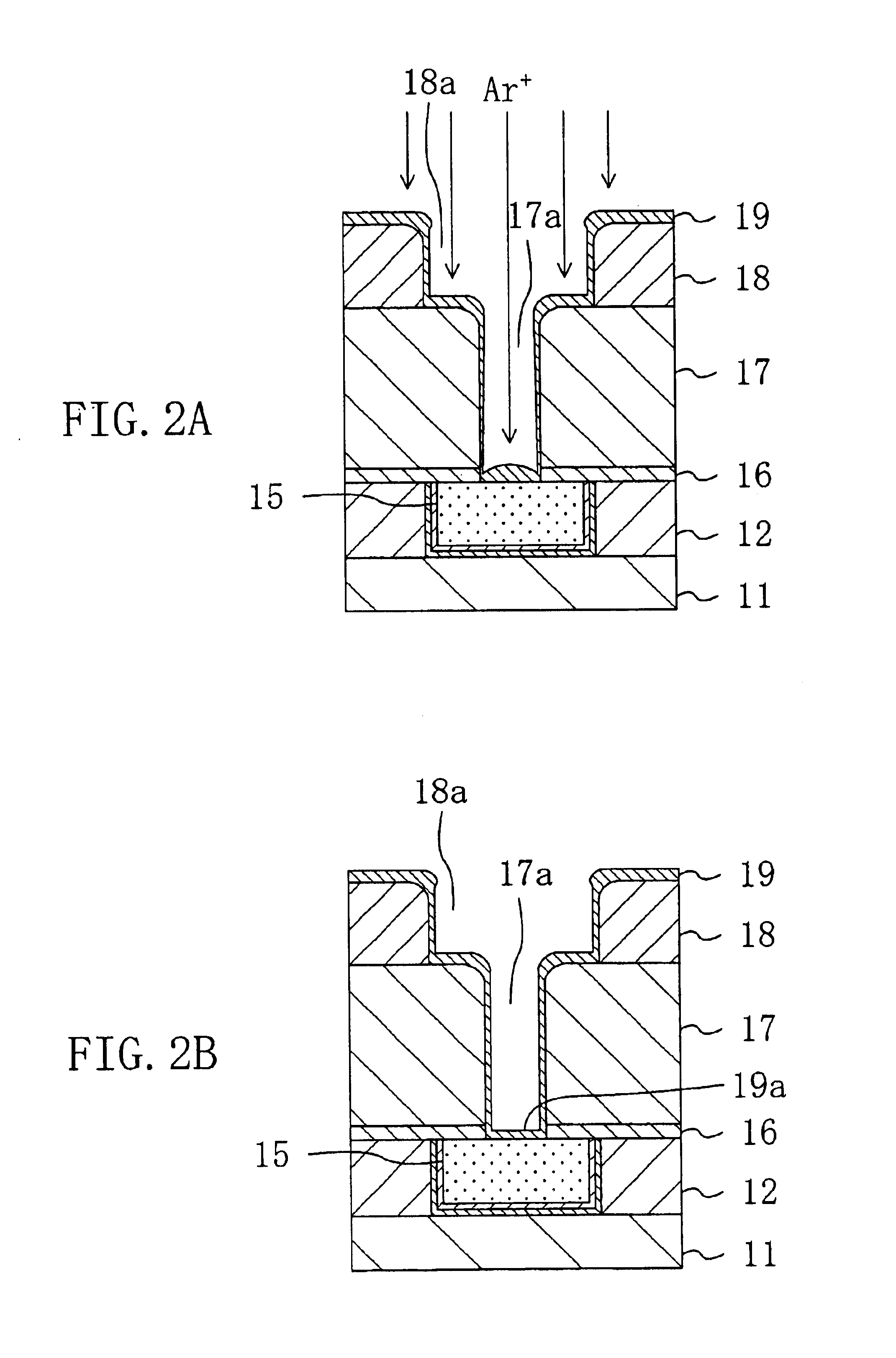Method for manufacturing semiconductor device
- Summary
- Abstract
- Description
- Claims
- Application Information
AI Technical Summary
Benefits of technology
Problems solved by technology
Method used
Image
Examples
Embodiment Construction
[0037]An embodiment of the present invention will be described with reference to the drawings.
[0038]FIGS. 1A and 1B through 6A and 6B illustrate a method for manufacturing a semiconductor device according to an embodiment of the present invention, wherein cross-sectional structures of part of multilayer interconnects including a via hole (contact hole) are shown in the order of process steps.
[0039]Initially, as shown in FIG. 1A, for example, a first insulating film 11 and a second insulating film 12 which are each made of BPSG (Boron Phosphorous Silicate Glass) obtained by adding boron and phosphorous to silicon oxide are successively deposited on a semiconductor substrate (not shown) made of silicon (Si) by a chemical vapor deposition (CVD) process. Subsequently, a lower-interconnect-forming groove is formed in a predetermined region of the second insulating film 12 by lithography and dry etching. Thereafter, a lower barrier layer 13 made of tantalum nitride (TaN) and an upper barr...
PUM
 Login to View More
Login to View More Abstract
Description
Claims
Application Information
 Login to View More
Login to View More - R&D
- Intellectual Property
- Life Sciences
- Materials
- Tech Scout
- Unparalleled Data Quality
- Higher Quality Content
- 60% Fewer Hallucinations
Browse by: Latest US Patents, China's latest patents, Technical Efficacy Thesaurus, Application Domain, Technology Topic, Popular Technical Reports.
© 2025 PatSnap. All rights reserved.Legal|Privacy policy|Modern Slavery Act Transparency Statement|Sitemap|About US| Contact US: help@patsnap.com



